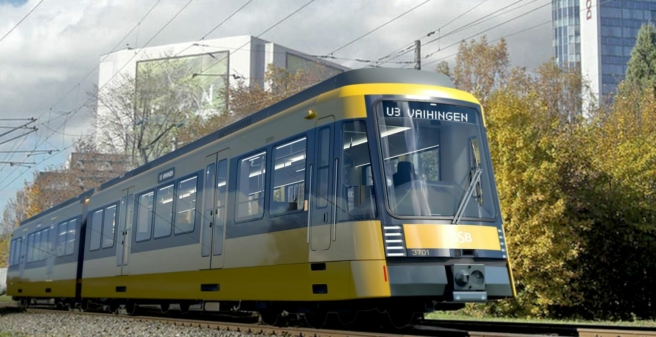
Stuttgarter Straßenbahnen AG (SSB) is rejuvenating its vehicle fleet. The first vehicles of the latest generation of S-DT 8.16 vehicles are due to appear in the city centre in 2026. Around 16 months after awarding the contract to Stadler, SSB has now unveiled the new design for the next generation of light rail vehicles.
Due to the average age of the current light rail vehicles, the procurement of replacement vehicles is necessary while the new S-DT 8.16 series represents a further development compared to the existing vehicles. The new generation of light rail vehicles will replace the vehicles of the first generation, S-DT 8.4 and S-DT 8.S built between 1985 and 1986. The order for the DT 8.16 was announced in November 2022 via the EU Official Journal. A total of 40 vehicles were firmly ordered with an option for 30 more. No information has yet been provided on the order value.
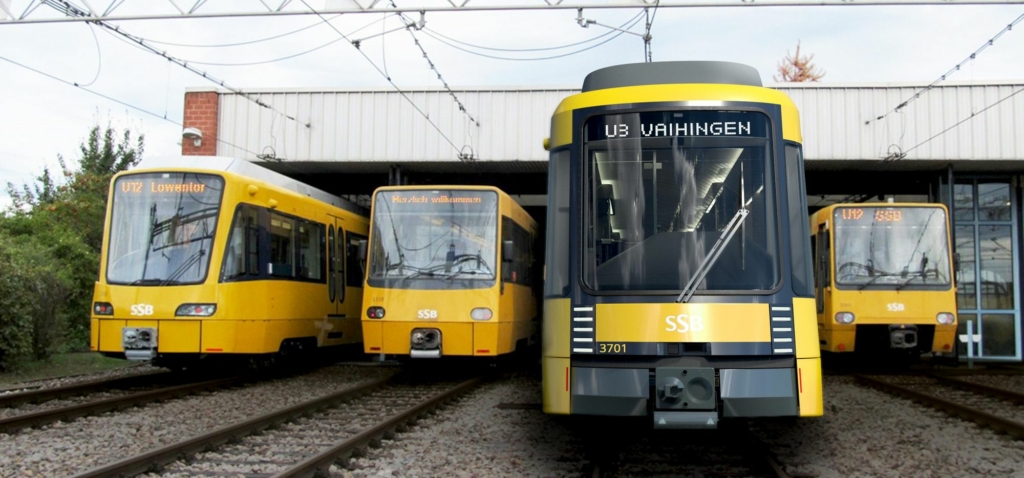
New interior and exterior design
While the new DT 8.16 generation of light rail vehicles can be clearly identified as “Stuttgart” trains by their yellow colour, the new vehicles feature numerous innovations compared to the previous generations, whereby the third generation (DT 8.12, 8.14 and 8.15) were also supplied by Stadler.
The new, completely rounded head shape is striking at first glance. The ergonomics of the workplace have also been improved. The new functions and the new driver’s desk were tested on a wooden model and validated by SSB employees.
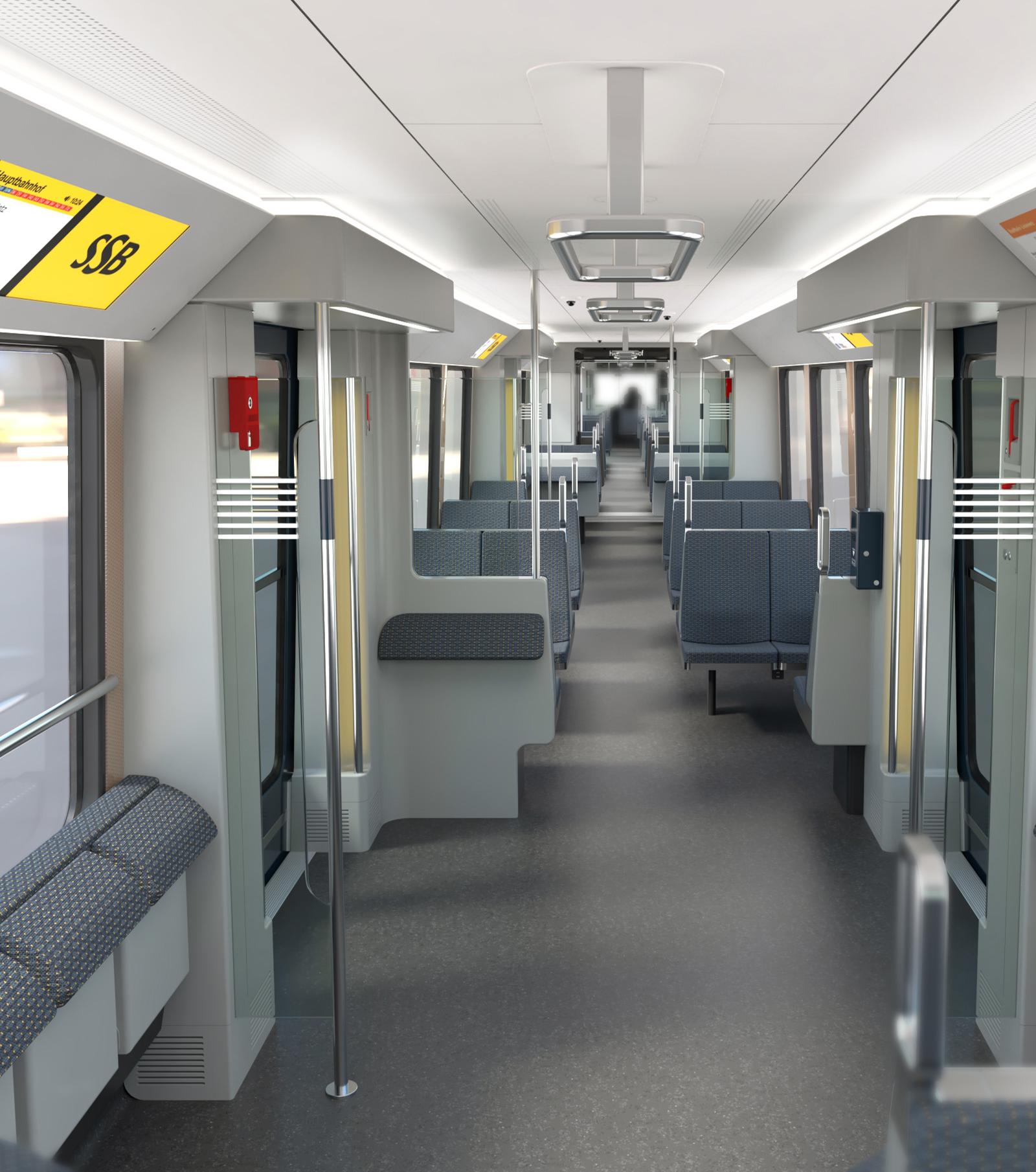
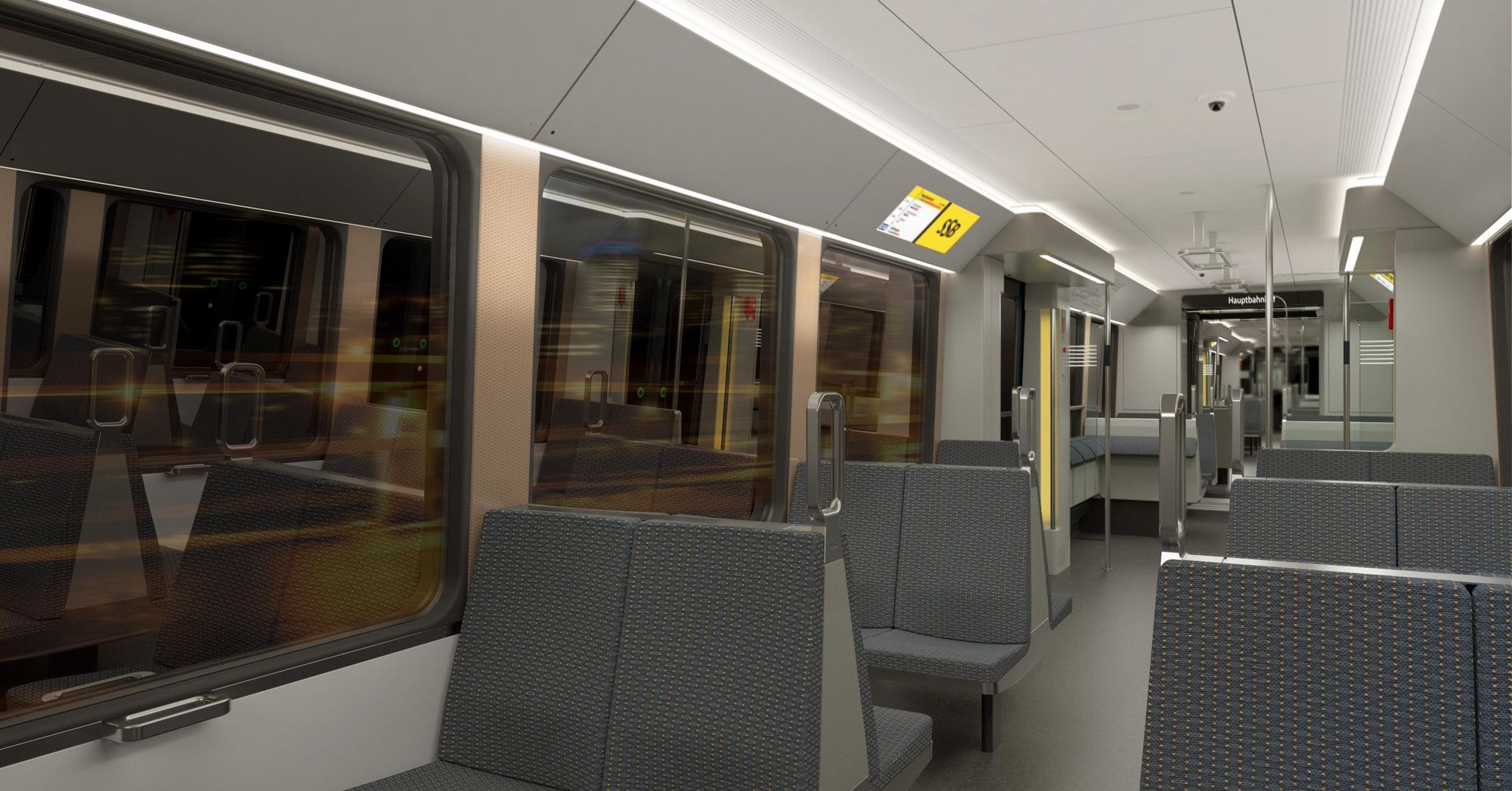
The general and proven vehicle layout, consisting of the two-part railcar train with a passageway in the centre and two doors per train half, continues to form the functional basis.
The function of the passenger-operated doors as well as the emergency stop devices will remain unchanged so that customers do not have to get used to them.
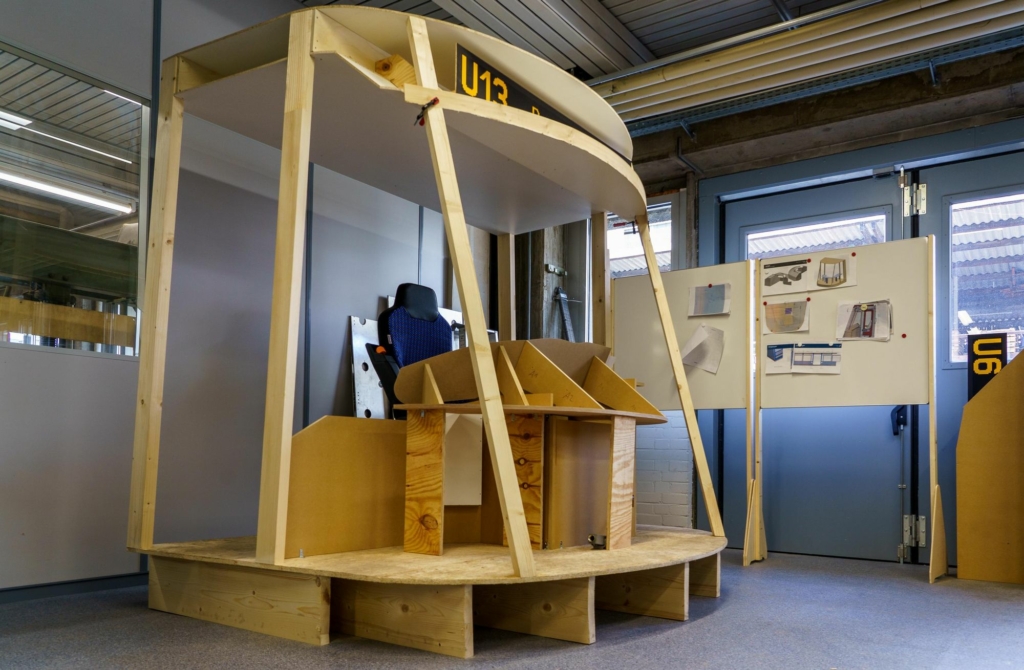
Numerous innovations have been implemented in the interior to meet the comfort requirements of passengers. These include:
- More flexibility: four instead of two multi-purpose areas per vehicle
- More space to accommodate luggage, pushchairs, rollators
- Leaning aids for comfortable standing
- Full freedom of movement in the boarding area thanks to the elimination of the grab rail in the centre (instead, there are stopping options in the immediate vicinity)
- Lowered boarding height for wheelchair users
- More monitors for visual passenger information – and a larger format
- Induction loops for acoustic information for the hearing impaired
- WLAN and USB ports
A little bit of history
The DT 8, known internally as the S-DT 8, is a family of light rail vehicles operated by the Stuttgart Tramways (SSB), which has been in service on Stuttgart’s light rail network since 1985. The designation “S-DT 8” stands for a married-pair LRV, type Stuttgart with eight axles, which means that a light rail train consists of two short-coupled railcars with a total of eight axles. The DT 8 has a standard gauge of 1435 mm and has replaced the previous metre-gauge GT4 trams in regular operation.
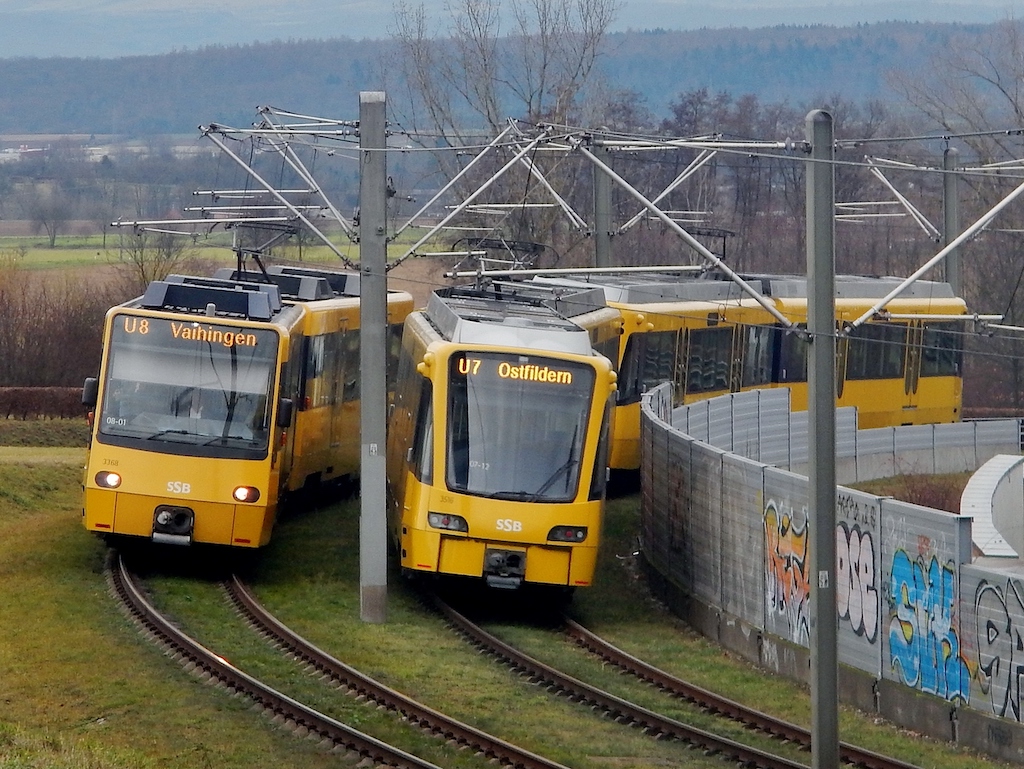
The DT 8 was developed especially for Stuttgart and its topographical conditions in the so-called “Stuttgart basin”. The technical concept was developed in co-operation between SSB and MAN, with Lindinger & Partner having a significant influence on the design. Due to the need to overcome an altitude difference of around 200 metres on most lines in the Stuttgart urban area, all axles of the vehicles are driven. Originally they were designed for gradients of up to 70 per thousand (for the Olgaeck-Bopser line), but later (after the Olgaeck-Eugensplatz line was commissioned) operation was authorised up to a gradient of 85 per thousand. The DT 8.12-15 are even designed for a gradient of 90 per thousand.
The existing DT 8 series can be divided into four groups:
- Prototypes: These include the DT 8.1-3 series, which comprise three different test trains (years of construction 1981 – 82)
- First generation: The DT 8.4-9 series were manufactured by DUEWAG, AEG, Siemens and SGP and represent the first generation of these light rail vehicles (years of construction 1985 – 96), a total of 114 vehicles
- Second generation: The DT 8.10-11 series are technically, constructively and design-wise significantly further developed compared to the first generation (years of construction 1999 – 2005), 50 vehicles in total
- Third generation: The DT 8.12-15 series have been further developed and are based on Stadler’s “Tango” series (years of construction 2012 – 2023), 60 vehicles in total

